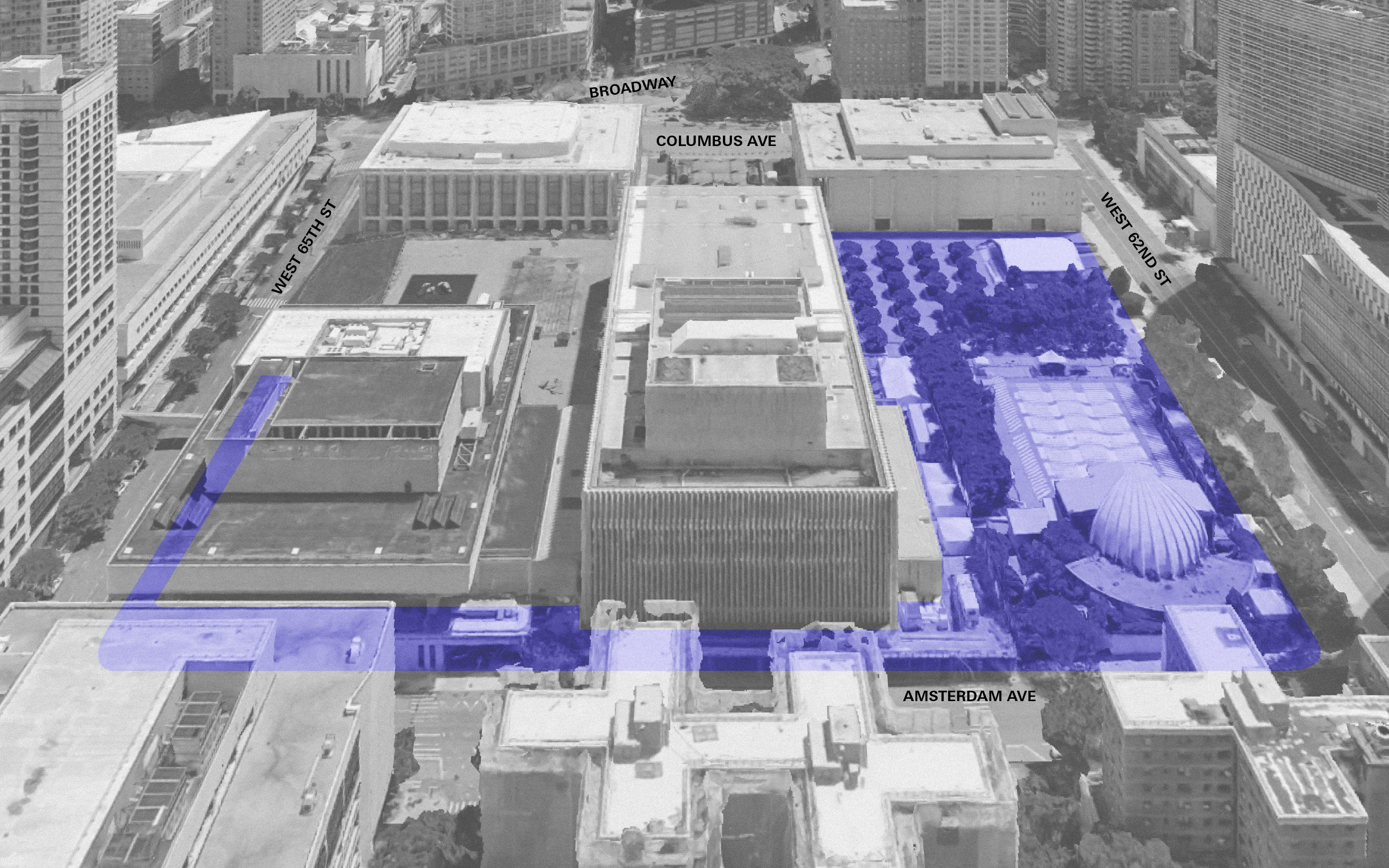
A New West Side
Sharing inspiration and joy of the arts to more New Yorkers
The new design of the Amsterdam Avenue side of Lincoln Center responds to local communities’ desire to have a series of transition spaces from the street into Lincoln Center’s iconic campus—extending greater welcome along the western side of the performing arts center, while creating a more usable and inviting public park and performance venues that better meet the needs of artists and audiences today.
Opening up to Amsterdam Avenue
Creating an open and welcoming west side entrance
The new streetscape and garden entrances eliminate the visual and physical barrier wall at Damrosch Park to create a more welcoming edge to the campus. It has been designed to better serve Lincoln Center's close neighbors, including residents of New York City Housing Authority campuses at Amsterdam Houses and Addition, and students of Fiorello H. LaGuardia High School of Music & Art and Performing Arts and the five high schools at the Martin Luther King, Jr. Educational Complex.
By removing the wall at Damrosch Park and replacing it with inviting, human-scaled spaces, the design, developed with input from NYC Parks, improves pedestrian circulation and prioritizes places for community use and relaxation. The design also seamlessly connects to the rest of the campus, including Josie Robertson Plaza, bringing the park to the street and introducing greater access and works of art in the park.
Amsterdam Avenue Before and After
Slide the center line to see the transformation
Left: Current view from Amsterdam Avenue. Photo by Lincoln Center for the Performing Arts. Right: View from Amsterdam Avenue looking into Damrosch Park; visible is new streetscape. Rendering by Brooklyn Digital Foundry.
Amsterdam Avenue & 65th Street Before and After
Slide the center line to see the transformation
Left: Current view from Amsterdam Avenue and 65th Street looking at New York Public Library for the Performing Arts and entrance to Lincoln Center at street level. Photo by Lincoln Center for the Performing Arts. Right: View of SE corner Amsterdam Avenue and 65th Street looking at New York Public Library for the Performing Arts with seating area and mirror façade. Rendering by Brooklyn Digital Foundry.
Drawing inspiration from Lincoln Center’s Modernist architecture and landscape architecture, the design acknowledges the original campus’ symmetrical layout and formal edges by retaining a strong central axis and formal entry points, while introducing and sensitively integrating contemporary elements that accommodate accessibility and flexibility of use and support a variety of programmatic needs. The new design also incorporates materials, textures, colors and scale of design elements found across the rest of Lincoln Center to create cohesion across campus. Features of the reimagined entrances to the campus include:
“The new design for Damrosch Park will repair what for so long has been one of the great failures of Lincoln Center, the cold shoulder it turns toward its neighbors to the west, replacing an uninviting open space with a vibrant new park gracefully connected to its surroundings,” said Paul Goldberger, architectural scholar and historian. “More remarkable still, the design does not compromise Lincoln Center’s original architecture, but reinforces it.”
Community Park Spaces
Making a more dynamic public space
The project introduces new community spaces centered around a water feature and expansive lawn space, surrounded by benches and movable chairs. Many of the geometries in the new park echo historic geometries. For instance, the new lawn evokes the shape and scale of the Bandshell, but re-interprets it as a space for community activity rather than a physical barrier.
Throughout the participatory planning process, community members shared their desire for the spaces adjacent to Amsterdam Avenue to be flexible, graceful, and human-scaled. New Yorkers from around the neighborhood and the city at-large also felt strongly that the park should prioritize greenery, a water feature, increased shade and sustainability—including 50% more trees than currently exist in the park. Features of the community spaces include:
Performance Stage and Plaza
Building a world-class amphitheater for NYC
In community workshops, participants emphasized the importance of maintaining the park’s primary and historic use as a performance park. The new performance venue—which includes a permanent theater structure and an inviting, open plaza for audience seating of up to approx. 2,000—responds to this interest by creating an improved, world class performance park to meet artistic and community needs.
The location and design of the new performance venue maintains the historic vista from Josie Robertson Plaza with a gridded veil of trees. The venue realizes the original intent of a theater in a park, by surrounding the new architecture with a veil of trees.
Performance Stage and Plaza Before and After
Slide the center line to see the transformation
Left: Current view of plaza in front of Bandshell, looking west towards NYCHA Amsterdam Houses. Photo by Lincoln Center for the Performing Arts. Right: View of amphitheater and audience area during performance looking southeast towards 62nd Street. Rendering by Brooklyn Digital Foundry.
The new size, orientation, and design of the stage, along with technological and infrastructural improvements, will greatly improve the artist and audience experience in Damrosch Park and will mitigate sound impact outside the venue as it welcomes dance, theater, and music from around the world.
Damrosch Park has been a critical space for free, non-ticket holding public access since its inception. But, for the majority of the year, the predominantly hardscape space is severed and cut off from the contiguous community and unusable as a park. This design will allow for more of the park to be used year-round, as the permanent venue will not require significant build-outs before and after each performance season. The configuration of the stage and its seating frame a plaza that also supports a variety of events and flexible uses. When not used for performances, the performance area can also serve as a recreation destination.
Theater features include:
